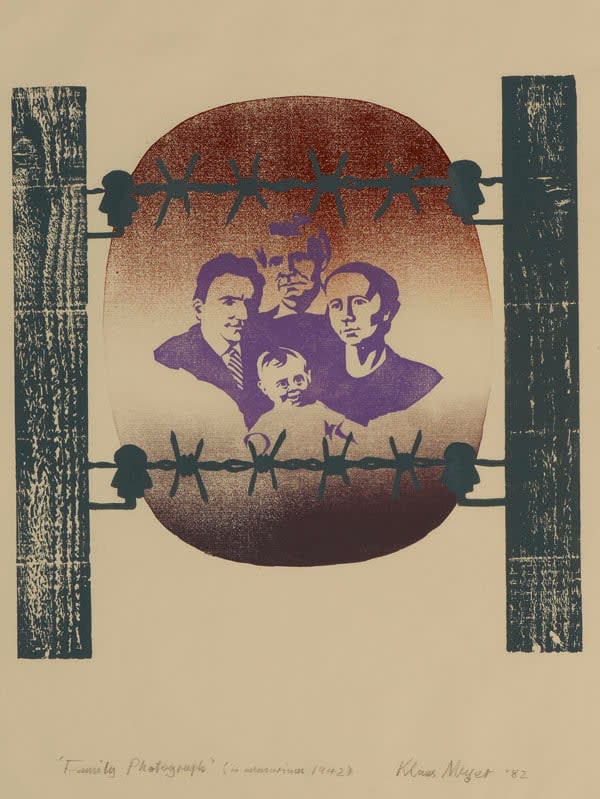Klaus Meyer was born into an assimilated Jewish family in Berlin, Germany on 16 September 1918; his mother was a painter. Following Hitler's accession to the German Chancellorship and the introduction of anti-Semitic legislation, his father, a doctor, was banned from practising medicine in 1935 and died soon afterwards in 1937 (his mother later perished in Auschwitz, along with other members of the wider family).
In 1938, as the situation worsened, Meyer fled Berlin almost penniless. He joined his elder brother, composer Ernst Meyer, and his sister in London; he studied graphics at the Central School of Arts and Crafts and also took drawing classes. Upon the outbreak of the Second World War, Meyer was rejected for army service and as a so-called 'enemy alien' was interned, first in Shropshire and then in Onchan Camp, on the Isle of Man from 1940-42. Onchan had an active artistic community and Meyer participated in exhibitions and also submitted drawings to the camp newsletter, The Onchan Pioneer, with materials scarce, he sometimes used wallpaper as a support. After his release, he worked as a commercial artist on propaganda posters and married Celia Petszaft, a fellow refugee from Poland.
Meyer was a founder member of the Hampstead Artist’s Council and went on to study painting and printmaking at the Slade School of Fine Art. He then taught at the Hornsey College of Art and Kilburn Polytechnic in the 1960s and 1970s and held many solo and group exhibitions. Meyer often found inspiration for his art on nearby Hampstead Heath, as well as in literature and poetry, particularly by Goethe and other German writers. His bold style and use of experimental materials continued well into his later years. Klaus Meyer died in Cambridge, England on 7 June 2002.


